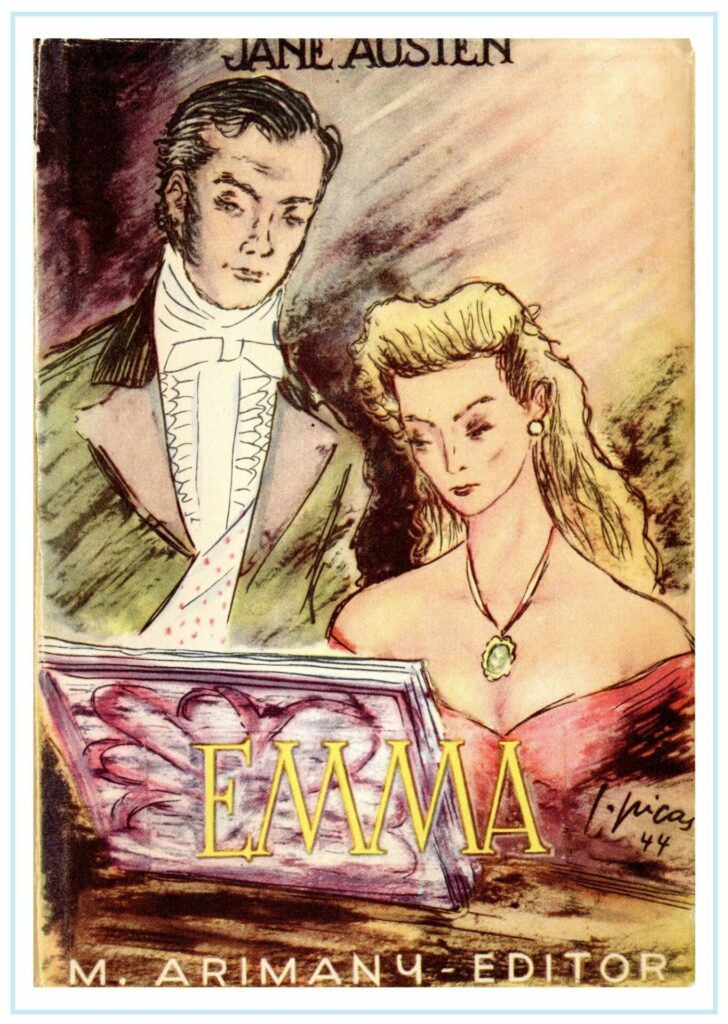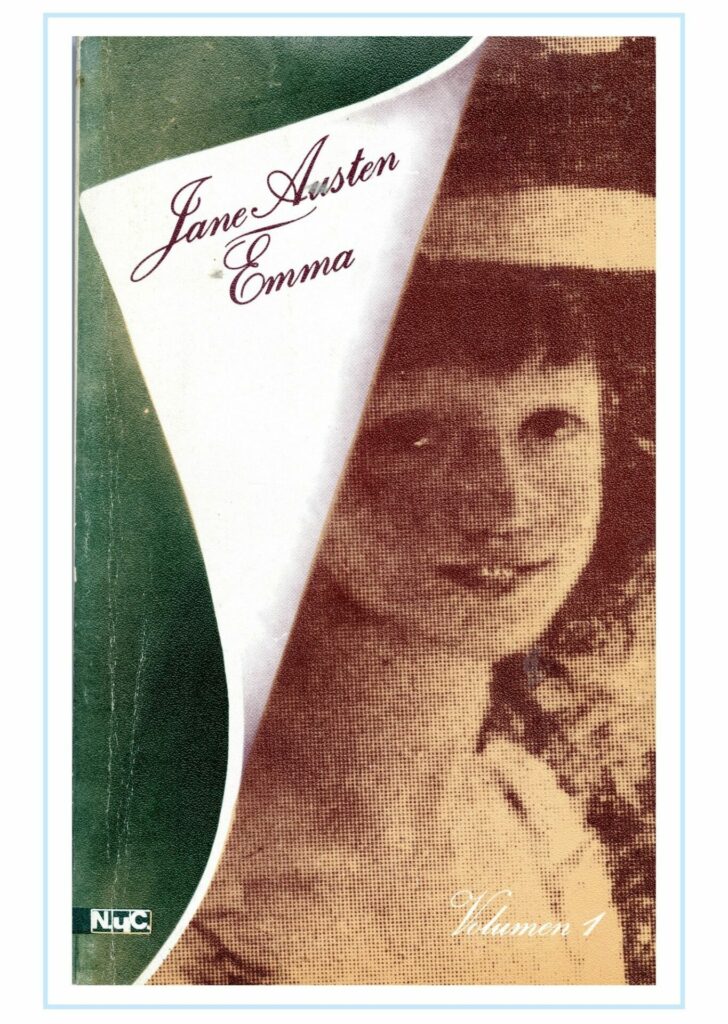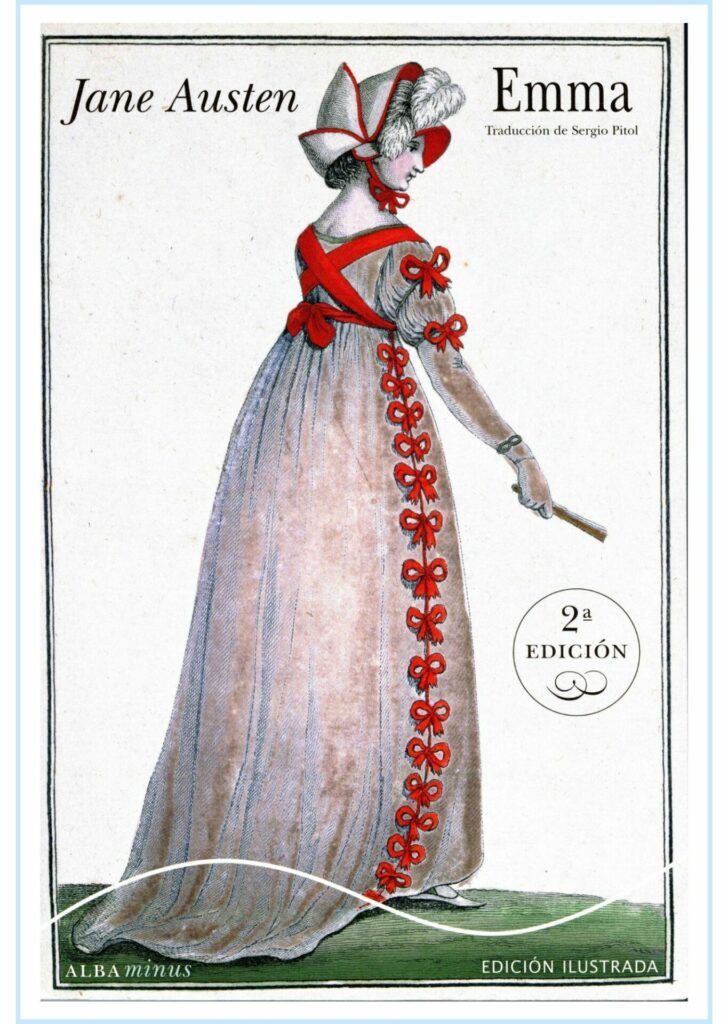Welcome to the first experience within this exhibition, the visual world of Emma‘s covers. Ever since I was little, literature has elicited a very visual experience in my mind. Whether that be from a writer’s ability to describe the world that I am envisioning or my own imagination’s painting of rich and colorful worlds, a book was always far more than a story on paper. It became a visual work of art in my mind. While we each may have our own visual experiences of a text (or may not), we do share in one concrete visual experience every time we pick up a book — its cover.
So often we admire the cover of a book in passing, but don’t necessarily take the time to truly see it. However, we as humans are visual individuals. Cover art plays a larger part in our decision to pick up a book than we may realize. By entering the visual world of these translations, we are agreeing to take a moment and share in a visual experience of these unique pieces of art and truly see what is in front of us and how that makes us feel. While I may guide us through that experience, never forget that art is personal and what I see may be far from the magic that you experience in this journey. There is no right or wrong way to look at a piece of art. The only thing that matters is your own lived experience at this moment and the magic that is created in collaboration between our own life and memories and the designer’s choices explored below.
1945 Spanish Translation of Emma
I invite you to notice how in our first translation the cover designer, C. N. Gisbert, chose an illustrative style. The cover does not read like a photograph or a truly realistic work of figurative art, instead it resembles something far more personal — a sketch. It is as if we are invited into the artist’s own dream world of Emma, the one that they themselves experienced in their mind. Not only that, but the characters themselves are represented outside of their time. While the male figure is depicted with a high necked collar, popular in Regency England, the woman’s fashion choices feel out of place, with a hairstyle and dress of a different era. These elements add to the personal touch of this cover and give us a glimpse beyond the novel and into the imagined world of the designer.

Emma by Jane Austen. Translated from English to Spanish by Jaime Bofill Y Ferro. Published in Barcelona in the year 1945. Cover art designed by C. N. Gisbert.
1971 Spanish Translation of Emma
In our second translation the cover designer, who’s name is unknown, takes a completely different direction from our first. Rather than a sketch, we are invited to look at what appears to be a grainy sepia toned photograph. But notice how we don’t see the full “photo.” Another layer must first be peeled back to expose the image of the young lady, her smile, and the title of the book. This designer chose to incorporate a very interesting element into their cover art — mystery. We are faced with the mystery of the grainy photo, the mystery of the photo and the title being hidden beneath the green mock cover, and the mystery behind this young woman’s smile. While Emma is not written in the genre of mystery, this cover ignites my curiosity about the designer’s own experience with this story.

Emma by Jane Austen. Translated from English to Spanish by José Luis López Muñoz. Published in Madrid in the year 1971.
2014 Spanish Translation of Emma
In our third translation, the cover designer, Pepe Moll, brings us back to the Regency era of the novel. Again with an illustration, we are drawn into the world of the artist and how the cover designer visualized the novel. Something that truly stands out to me in this cover, is the use of red and green as the main accent colors. While the rest of the cover is rather muted, the red and green draw our eyes’ attention. This is because red and green are complementary colors. Placed next to each other, they heighten the visual experience of their counterpart. Right away, our mind is captured by the artist’s use of color. Like in the 1971 edition, I can’t stop wondering about the mystery of the illustration. Where is the woman looking? Is she standing on a hill? Where is she going? What questions do you find popping into your mind when you look at these three covers?

Emma by Jane Austen. Translated from English to Spanish by Sergio Pitol. Published in Barcelona in the year 2014. Cover art designed by Pepe Moll.
Continue exploring the exhibition and enter the world of written text.